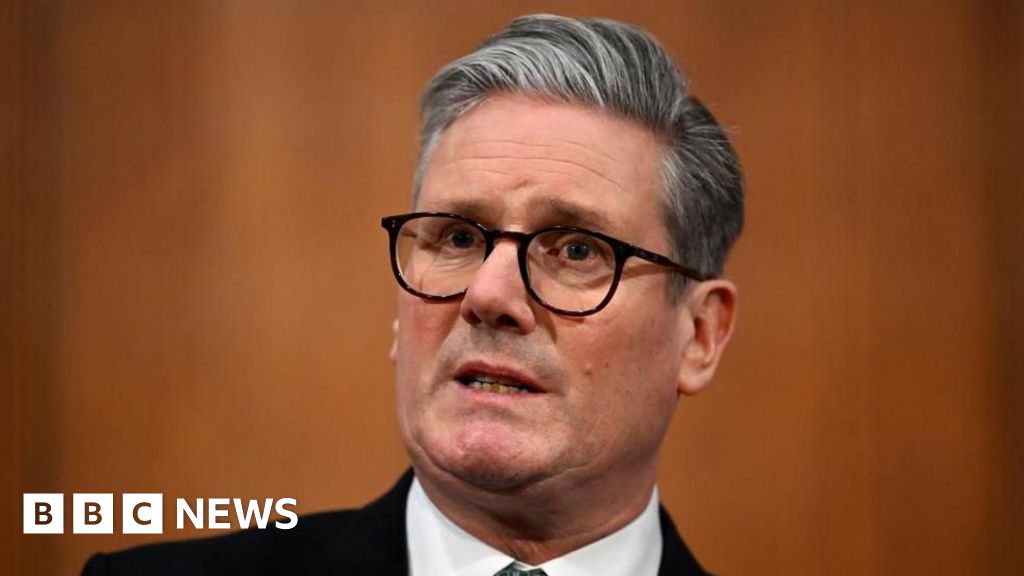Paul B. Stares serves as the General John W. Vessey Senior Fellow for Conflict Prevention at the Council on Foreign Relations, where he leads the Center on Preventive Action. Michael O’Hanlon holds the Phil H. Knight Chair in Defense and Strategy at the Brookings Institution.
Insights from Our Experts
As the future of a peace agreement regarding Ukraine remains uncertain under the Trump administration, Europeans should not underestimate the expectations that will follow. National Security Advisor Michael Waltz recently emphasized that the underlying principle is clear: the Europeans “must take ownership of this conflict moving forward.” Waltz noted that while President Trump will be working toward a resolution, the responsibility for security guarantees will fall to Europe.
Explore More:
The reactions of European nations in the coming weeks will significantly influence not only Ukraine’s future but also the transatlantic alliance, which has been crucial to their security for nearly eighty years. It is imperative for these nations to enhance their defense responsibilities and work toward maintaining stability across the continent. Failure to do so could jeopardize the partnership’s integrity and expose their ambitions within the emerging multipolar global landscape.
Simultaneously, the Trump administration has a vested interest in ensuring the Europeans succeed in their endeavors. It is essential to maintain the integrity of any cease-fire in Ukraine, ensuring it is not merely a tactical pause for Russia to renew its aggressive actions. Continued U.S. military aid to Ukraine is crucial, alongside assurances that it will support European peacekeeping efforts. Only with such credible support will Russian President Vladimir Putin be likely to honor any cease-fire.
In essence, the priority for Ukraine should echo the foundational aim of NATO: “to keep Russian forces out, ensure Europe’s presence within, and maintain U.S. readiness.” But how can this be effectively achieved?
Insights from Our Experts
The Financial Commitment to Ukraine’s Defense
Initially, the Europeans must present the Trump administration with a concrete and well-resourced strategy to collectively support Ukraine’s national defense in a sustainable manner. We have assessed that Ukraine can sustain its core defense needs with existing manpower for approximately $20–40 billion annually, similar to the defense budgets of Israel or South Korea. This will necessitate ongoing Western military support, intelligence collaboration, and training enhancements.
Furthermore, the Europeans must bolster Ukraine’s security through their troop deployments. Given Putin’s strategic tendencies, basic backing for an international monitoring force—whether through the UN or the Organization for Security and Cooperation in Europe—will not suffice. European nations must “invest in the effort,” which necessitates a sizeable troop presence of at least twenty thousand soldiers on Ukrainian soil.
Explore More:
The critical inquiry then becomes: which organization or coalition could lead this initiative? One viable option is to utilize the “Berlin-plus” framework, allowing the EU to leverage NATO resources to support its Common Security and Defense Policy missions abroad. This approach would not only affirm the EU’s commitment to Ukraine’s membership aspirations but also position it as a serious geopolitical player. This model has previously been applied to peacekeeping missions in the Balkans. Moreover, it could facilitate participation from the United Kingdom, a significant military power, despite its EU withdrawal.
A Coalition of European Nations
Alternatively, should securing unanimous support from all EU states prove challenging, forming a “coalition of the willing” may present a practical solution. Historical precedents exist, such as the British-led Joint Expeditionary Force (JEF) established in 2018, which utilizes NATO resources to deal with threats in northern Europe and the Baltic region. However, an EU-led coalition would require a more substantial commitment, drawing contributions from Bulgaria, France, Germany, Poland, Romania, and the UK, rather than relying on JEF’s smaller rapid reaction force of around ten thousand troops.
The primary military consideration is this: any foreign forces present in Ukraine under a future agreement must possess the capability to defend themselves against possible Russian aggression until reinforcements can arrive. If Ukraine fulfills its obligations and establishes a viable self-defense capability, European forces could primarily serve as a backup and would not be under immediate threat of being overwhelmed in the early stages of any conflict. This would provide adequate time to consolidate resources within Ukraine and develop a comprehensive defense strategy alongside Kyiv. Achieving this does not necessitate the two hundred thousand troops suggested by Ukrainian President Volodymyr Zelenskyy but might require around twenty thousand, based on contemporary military organization and structure.
U.S. Security Assurances
Lastly, as Europe demonstrates its resolve, the United States must maintain its support. The Trump administration should reassure European allies that it stands firmly behind their dedication to Ukraine’s defense—both materially and politically—creating a crucial part of a robust deterrent strategy against Russia. European nations cannot bear this burden alone nor should they have to. Furthermore, the future U.S. military posture must shift slightly eastward from its 2022 position, positioning response forces in Poland and potentially the Baltic states. A sensible figure would be an increase of about ten thousand U.S. troops in Poland or similar locations, in addition to the five thousand troops stationed there prior to 2021. Such a troop presence signifies a serious commitment to maintaining combat readiness and logistical capabilities. Moreover, the U.S. should not discount the possibility of deploying forces within Ukraine, as indicated by recent comments from Vice President JD Vance.
Waltz’s call to NATO allies has merit—up to a certain extent. While it is essential for Europeans to contribute more, the devastating impact of two world wars in the last century serves as a reminder that now is not the time for the United States to hastily withdraw from Ukraine as the guns fall silent.
This article reflects the personal views of the authors. The Council on Foreign Relations is an independent, nonpartisan organization and publisher, and does not take institutional policy positions.









